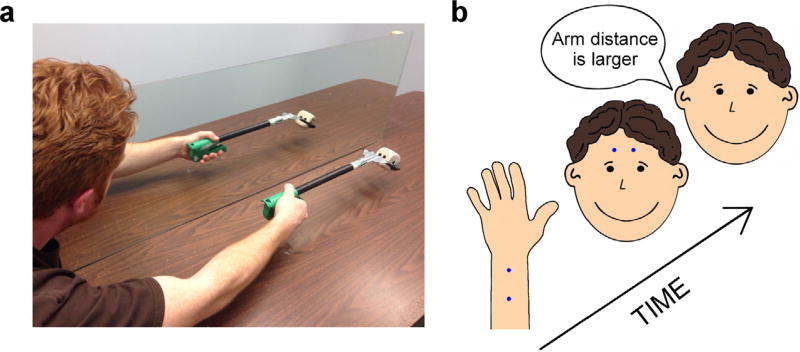Fig. 1.
Visual illusion and tactile paradigm. (a) Mirror Visual Illusion: A long mirror was placed slightly to the left of the mid-sagittal plane of the participant. The participant’s left arm was placed out-of-sight and hand palm-down behind the mirror (Exp. 1a) or resting next to the participant’s left hip (Exp. 1b). The illusion produced the experience that the left arm was using the tool, despite remaining completely stationary. (b) Tactile distance judgment task: Two tactile points separated by various distances (blue dots) were applied manually to the arm (target surface) and forehead (reference surface). Participants judged which of the two body parts was touched with the farthest distance between the two tactile points. Each participant’s responses, before and after tool use, were fit with a logistic curve. (For interpretation of the references to colour in this figure legend, the reader is referred to the web version of this article.)

